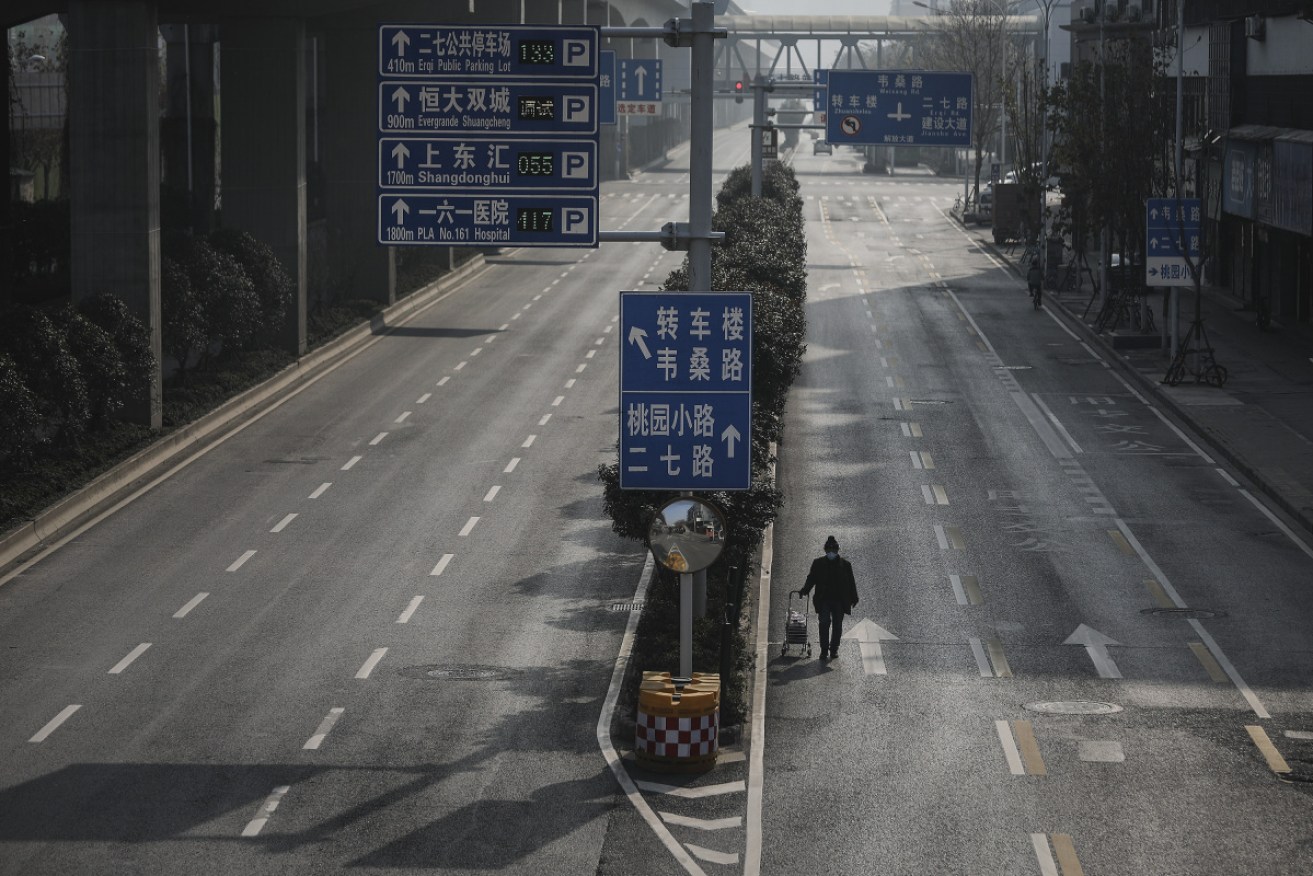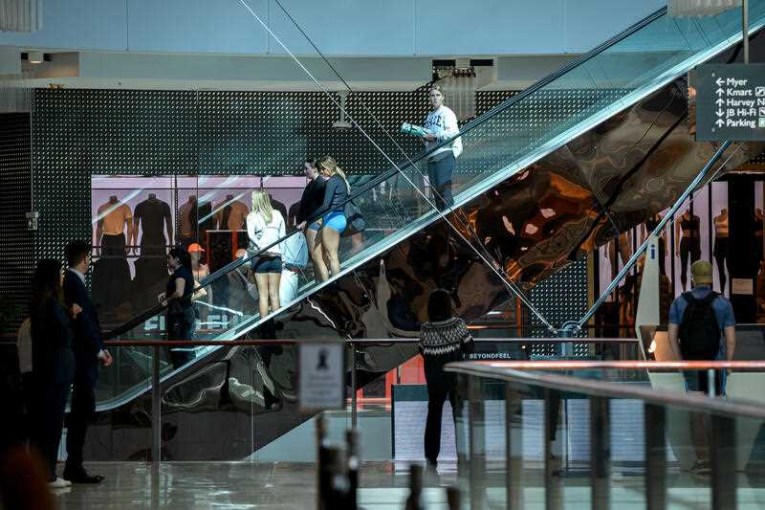Coronavirus lockdown is likely in Australia. Here’s what life could be like for us


The empty streets of Wuhan during lockdown. Photo: Getty
Around the world, more countries are going into lockdown to combat the deadly coronavirus.
India is the latest to pull daily freedoms in the name of continuing humanity as we know it, declaring on Wednesday the country would be keeping their 1.3 billion citizens confined to their properties for 21 days.
Announcing the lockdown, Indian Prime Minister Narendra Modi said: “To save India and every Indian, there will be a total ban on venturing out of your homes.”
The world has not seen anything like this since Venice cut itself off to stop the Spanish Influenza getting in.
It was a smart move.
And it looks like it’s working again.
China is reporting self-isolation and social-distancing methods have helped stop the spread of the coronavirus.
As well as India, residents in the UK, France, Italy, Denmark, Ireland, Germany and Portugal – just to name a few – are hunkering down.
Our mates closer to home in Indonesia have started locking down and across the ditch, we won’t see our New Zealand cousins roaming out of their homes for the next month.
A full-wide national lockdown is on the cards for Australia.
That’s no secret.
And after Victorian Premier Dan Andrews said on Wednesday that stage three was coming for his state, it looks likely some areas will be locked down before others.
There is no point speculating about what the shutdown will exactly look like when it is announced either at a state-level or nationwide.
But given how we’ve followed other nations’ approaches so far during the first stages of the virus restrictions, it’s worth looking at what did and didn’t work overseas.
Until we know more, remember: Even without a full-on lockdown law in place, Aussies should be “staying inside to stay alive”.
And wash your hands.
Wuhan

A worker sets up beds at a stadium in Wuhan to convert it into a makeshift hospital.
Lockdown started: January 23.
Death toll at time: 17.
Wuhan was the first city to go into lockdown after China made the unprecedented move to seal off 11 million people and shut down services.
In the beginning the lockdown was met by scepticism by health officials, including the World Health Organisation.
But as the virus took off, so did the trend and has since been adopted, at least in part, by more than 19 countries.
In the morning of January 23, residents were told that from 10am the shutdown would begin, and they were barred from leaving the city.
This didn’t work well, as it is believed many people fled the city, some of them taking COVID-19 with them.
Schools were already shut, but public transport was suspended and private cars were no longer allowed on the road – unless they were on official business.
Visits to friends and family in other houses or apartments were banned.
The only people allowed into residential blocks who didn’t live there were healthcare workers.
Farmers and supermarkets stayed open and people were allowed to leave their homes to go to these – under the condition they wore a mask at all times.
Temperature checks were rolled out on the streets.
Over two weeks the situation deteriorated quickly and police started to forcibly remove sick people from buildings so they could go into quarantine.
The city became a ghost town, but it helped stop the spread.
On Wednesday, China announced it will lift the lockdown on April 8, more than two months after the city was sealed off.
Italy

A tent set up in front of the emergency ward of the Cremona hospital in northern Italy.
National lockdown begins: March 9.
Death toll at time: 463.
After Italy recorded its first two virus deaths in February, several towns in Lombardy were placed into lockdown, affecting about 50,000 people.
But many officials and a lot of the public didn’t take it seriously. The virus continued to spread – and fast.
On March 8, Italian Prime Minister Giuseppe Conte expanded the quarantine to most of northern Italy.
But the rollout was chaotic, and many citizens continued their life as normal or raced over the border.
The result is reflected in the country’s climbing death toll.
By March 9, the whole country was locked down.
The government has asked its 60 million citizens to stay however possible and only venture out for necessities.
When Italians leave the house now, they need to be carrying a form to justify their need to travel – such as to exercise or go to the supermarket or doctor.
Rule-breakers are fined $235.
Spain
Tweet from @_SJPeace_
National lockdown begins: March 15.
Death toll at time: 288.
Spain became the second European country to impose a nationwide lockdown after the government ordered its 47 million residents to stay inside their homes for at least 15 days.
Bars, restaurants and hotels are closed across the nation.
But people are allowed to leave their homes for work, banking, medical appointments and to buy groceries.
Unlike Italy, where people are still allowed to go for a walk, Spain has banned everyone except dog owners from taking a short stroll.
One man in Northern Spain tried to fake dog ownership by dragging a stuffed toy through the streets. Police were less than impressed.
Tweet from @JupolNacional
Those caught leaving their house for anything but essentials, (food, medicine, banking, or looking after the elderly) can face fines of up to $53,000. The Spanish aren’t messing around on the fine front.
France
Tweet from @AFPphoto
National lockdown begins: March 16.
Death toll at time: 148.
France had already closed pubs, restaurants and all non-essential shops before 67 million citizens went into lockdown two weeks ago.
People are barred from leaving the house only for essentials and they must carry a paper to state why they are out of home.
Residents are allowed to leave their house for walks or runs, but no more than “one-kilometre, two-kilometre max” officials have said.
The fine is about $242.
California
Tweet from @latimes
Begins: March 17.
Death toll at the time: 6.
More than 6.7 million people in San Francisco and five other Bay Area counties in the US state of California have been ordered to stay inside until Tuesday until April 7.
Supermarkets, pharmacies, restaurants serving takeaway, and petrol stations are all open.
Public transport and airports are also open – but only for essential travel.
Non-essential travel on foot, by bicycle, scooter, car or public transport are all banned.
Residents are allowed to go out and eat food, get some fresh air and run essential errands.








